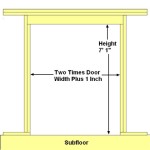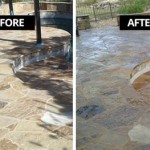Wood Tiles for Patio: A Comprehensive Guide
Wood tiles, also known as patio pavers or deck tiles, offer a versatile and aesthetically pleasing solution for enhancing outdoor spaces. They provide a convenient and often interlocking system for creating a durable and attractive patio surface, balcony floor, or deck covering. Their popularity stems not only from their natural appearance but also from their ease of installation and maintenance compared to traditional decking or paving methods.
This article will delve into the various aspects of wood tiles for patios, covering types, benefits, installation methods, maintenance practices, and considerations for selecting the optimal product for specific needs. Understanding these factors is crucial for making informed decisions and ensuring a long-lasting and satisfying patio solution.
Types of Wood Used in Patio Tiles
The wood used to manufacture patio tiles dramatically impacts their durability, appearance, and price. Several different species are commonly employed, each offering distinct characteristics.
Hardwoods: Hardwoods, originating from deciduous trees, are generally denser and more durable than softwoods. This inherent strength makes them well-suited for outdoor applications subjected to constant exposure to weather elements and foot traffic.
Ipe: Ipe is a South American hardwood renowned for its exceptional density and resistance to rot, decay, and insects. Its rich, dark brown color and fine grain make it a visually appealing choice. Ipe demonstrates remarkable durability, often lasting several decades with minimal maintenance. However, its density makes it difficult to work with, and it often commands a higher price point.
Teak: Teak is another popular hardwood choice celebrated for its natural oils, which provide excellent water resistance. Its golden-brown hue weathers gracefully to a silver-gray patina. Teak is relatively easy to work with compared to Ipe, but it is also a more expensive option due to its higher demand and sometimes limited availability.
Cumaru (Brazilian Teak): Cumaru is a more affordable alternative to Ipe and Teak. It boasts impressive strength and durability and displays a reddish-brown color. While not as naturally resistant to insects as Ipe, proper sealing can extend its lifespan in outdoor environments.
Softwoods: Softwoods, sourced from coniferous trees, are generally less dense and more affordable than hardwoods. While they may require more frequent maintenance, they can still provide a satisfactory patio surface when properly treated and cared for.
Cedar: Cedar possesses natural oils that impart some resistance to rot and insects, making it a common softwood choice for outdoor applications. Its reddish-brown color and aromatic scent add to its appeal. Cedar is relatively easy to work with and readily accepts stains and sealants.
Redwood: Redwood is another naturally durable softwood known for its reddish-brown color and resistance to decay. However, sourcing sustainably harvested redwood is paramount to ensure responsible forestry practices.
Pressure-Treated Pine: Pine is a readily available and affordable softwood that is often pressure-treated with chemical preservatives to enhance its resistance to rot and insects. This treatment significantly extends its lifespan for outdoor use. However, the chemicals used in pressure treatment can be a concern for some homeowners; therefore, research and choosing appropriate treatment types are crucial.
Composite Wood: Composite wood tiles are manufactured from a blend of wood fibers and recycled plastic. This combination offers several advantages, including enhanced durability, resistance to moisture and insects, and low maintenance requirements. Composite wood tiles are available in various colors and textures, mimicking the appearance of natural wood. Some higher-end composite options can offer an extremely realistic wood appearance. The key advantage is their resistance to warping, cracking, and splintering, which are common issues with natural wood exposed to the elements.
Benefits of Using Wood Patio Tiles
Wood patio tiles offer a range of benefits that contribute to their increasing popularity as an outdoor flooring solution. Their appeal lies in their aesthetic qualities, ease of installation, and practical advantages over other materials.
Aesthetic Appeal: The natural warmth and beauty of wood add a touch of elegance and sophistication to any outdoor space. Wood tiles come in various colors, grains, and textures, allowing homeowners to create a customized look that complements their home's architecture and landscaping. They can be arranged in different patterns to add visual interest and create a unique design.
Ease of Installation: Many wood patio tiles feature interlocking systems that simplify the installation process. These systems typically consist of pre-assembled tiles that snap together, eliminating the need for specialized tools or professional assistance. This DIY-friendly installation can save significant time and money compared to installing traditional decking or paving.
Durability and Weather Resistance: Depending on the wood species or material used, wood patio tiles can withstand the rigors of outdoor exposure. Hardwoods like Ipe and Teak are naturally resistant to rot, decay, and insects. Even softwoods can be treated to enhance their durability. Composite wood tiles offer exceptional resistance to moisture, insects, and fading, making them a long-lasting and low-maintenance option.
Comfort and Safety: Wood is a naturally comfortable surface to walk on, providing a softer feel than concrete or stone. Wood tiles also tend to be less slippery than other materials, enhancing safety, especially in wet conditions. Their surface provides better grip and minimizes the risk of slips and falls.
Portability and Reusability: Wood patio tiles are relatively easy to disassemble and relocate. This portability makes them a convenient option for renters or homeowners who may want to change their outdoor space in the future. The tiles can be easily removed and reinstalled in a different location.
Maintenance: While all outdoor materials require some level of maintenance, wood patio tiles, especially composite options, are generally easy to maintain. Regular sweeping and occasional washing with mild soap and water are typically sufficient to keep them clean and looking their best. Natural wood tiles may require periodic sealing or staining to protect them from the elements and maintain their color.
Installation and Maintenance
The installation process for wood patio tiles is generally straightforward, but proper preparation and execution are essential for ensuring a stable and long-lasting patio surface. Similarly, appropriate maintenance practices are crucial for preserving the beauty and integrity of the tiles over time.
Installation:
Site Preparation: Before installing wood patio tiles, it is essential to prepare the site properly. Remove any existing grass, weeds, or debris. Ensure the surface is level and well-drained. If necessary, add a layer of compacted gravel to provide a stable base. A slight slope can aid in water runoff.
Substrate: The substrate is the foundation upon which the tiles will be placed. For most interlocking tiles, a relatively firm and even surface is sufficient. Concrete patios are ideal substrates. For soil or gravel bases, consider using weed barrier fabric to prevent weed growth from penetrating between the tiles.
Tile Placement: Start laying the tiles in one corner and work your way across the patio area. Ensure the interlocking mechanisms are properly engaged, creating a seamless and even surface. Cut tiles as needed to fit around obstacles or edges using a saw. Be cautious when cutting composite tiles as they may produce dust that can irritate skin or eyes. Use appropriate safety gear during this process.
Edging: Install edging to contain the tiles and prevent them from shifting over time. Various edging options are available, including wood, plastic, or metal edging strips.
Maintenance:
Cleaning: Regularly sweep or vacuum the tiles to remove dirt, leaves, and debris. Occasionally wash the tiles with mild soap and water to remove stubborn stains. Avoid using harsh chemicals or abrasive cleaners, as they can damage the surface of the wood.
Sealing/Staining (Natural Wood): Natural wood tiles should be sealed or stained periodically to protect them from moisture and UV damage. The frequency of sealing or staining depends on the type of wood, the climate, and the level of exposure to the elements. Follow the manufacturer's instructions for applying sealants or stains.
Repair: Inspect the tiles regularly for signs of damage, such as cracks, splinters, or warping. Replace damaged tiles promptly to prevent further deterioration. For minor repairs, use wood filler or epoxy to fill cracks or gaps.
Winterization: In regions with harsh winters, consider protecting the tiles from snow and ice. Remove snow regularly and avoid using de-icing salts, which can damage the wood. Store loose tiles indoors during the winter months to prevent them from freezing and thawing repeatedly.
Additional Considerations:
When selecting wood patio tiles, consider the overall design aesthetic of the outdoor space. Choose a wood species or material that complements the home's architecture and landscaping. Also, take into account the level of foot traffic the patio will experience and choose a tile that is durable enough to withstand the wear and tear. Proper planning and execution during installation, combined with regular maintenance, will ensure that wood patio tiles provide a beautiful and functional outdoor space for many years to come.

Interlocking Ipe Wood Deck Tiles From Arrak Quick And Easy To Install

Btmway 1 Ft X Square Interlocking Acacia Wood Quick Patio Deck Tile Outdoor Checker Pattern Flooring 10 Per Box Cxxbn Gi33346w685 Tile01 The Home Depot

How To Create A Beautiful Wood Tile Patio Deck On Budget Do It Yourself Fun Ideas

Wood Deck Tiles Tile Tech Pavers Roof

Outdoor Wooden Tile Best In Singapore Nov 2024 Lazada Sg

Deck Tiles Ipe Decking

How To Install Patio Deck Tiles Installing Interlocking

Wood Look Tile Fusion Courtyard Dallas By Horizon Italian Houzz

Interlocking Ipe Wood Deck Tiles From Arrak Quick And Easy To Install

Deck Tiles Interlocking Porcelain Patio Flooring Backyard Design








